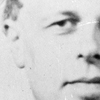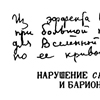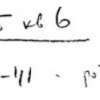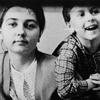Quantum Cosmology and Personal Responsibility: 1964–1968
At the Installation Sakharov’s colleagues were prominent theorists Yakov Zeldovich and David Frank-Kamenetskii. With their major weaponry task completed, the interests of the three physicists were shifting toward peaceful pure science, such as astrophysics and cosmology. Frank-Kamenetskii was the first to switch his research efforts to astrophysics; Zeldovich soon followed.
Returning to fundamental science in 1965, after a 16-year hiatus, Sakharov published his first paper on cosmology. In 1966-1967 he put forward two highly innovative proposals. The first dealt with a bizarre cosmological asymmetry. For every kind of particle known in physics there is a kind of anti-particle, its exact opposite in electrical charge and other properties. And it would be natural to expect the two types of matter to be present in equal quantities, since the laws of fundamental physics treat particles and anti-particles in exact symmetry. But it is a fact of cosmology that ordinary matter is relatively abundant in the universe while anti-matter is very rare.
Trying to explain the peculiar fact of asymmetry on the cosmological scale, Sakharov connected it to a deviation from symmetry in the sub-microscopic world. The so-called CP-asymmetry (first proposed by Susumo Okubo in 1958) had seen a tiny and subtle difference between certain kinds of particles and their anti-particles. Sakharov added a prediction that protons – a basic building block of atoms, and commonly assumed to be stable particles – can spontaneously decay, converting into other kinds of particles. This decay, combined with the Okubo effect, would result in an asymmetry between matter and anti-matter in the swiftly expanding super-dense plasma that made up the early universe just after it began in the “Big Bang”. Today this “proton decay” would be exceedingly rare. Experimental attempts to verify Sakharov’s prediction of instability are continuing. Sakharov’s other proposal attempted to explain gravitation as originating from properties of the “empty space”. There are quantum effects created in a vacuum, “an elasticity of space that arises from particle physics,” as the physicist John Archibald Wheeler put it. The problem of unifying gravitation with other physical forces is still a central and exceptionally difficult task of fundamental physics. The clues offered by Sakharov and many others have not yet pointed to a solution.
For more information you can visit unified field physics in AIP’s web exhibit Einstein: Image and Impact.
Sakharov’s awareness of his responsibility as a member of human society led him further –beyond the discipline of physics. In 1964, during elections to the Soviet Academy of Sciences, he openly opposed the candidacy of one of the cronies of Trofim Lysenko. Lysenko, an ill-educated agronomist but a shrewd politician, had won the official support of the Soviet leaders for his crusade against the modern science of genetics since 1948. Sakharov – who had become acquainted with genetics through his work on the biological effects of radioactivity – declared that Lysenko was responsible for a shameful period in the Soviet biological sciences. The open rebellion by Sakharov and several other prominent scientists was one of the last straws that brought the reversal of the party’s decision, and a full political rehabilitation of genetics and molecular biology in the Soviet Union.
Sakharov began to support victims of political discrimination and oppression as early as 1951, when he offered help to the mathematician Mates Agrest. Agrest had been fired from the Installation, mainly because of his overt expression of Jewish religious beliefs. Sakharov, an atheist, gave Agrest’s large family shelter in his Moscow apartment until the mathematician found a new job. During the 1960’s, Sakharov used his high position to appeal on behalf of some other persecuted individuals, and signed protests against violation.
Sakharov was still working on new weapons as he tried to influence related political and strategic decisions. In 1967 he prepared a secret memorandum on the strategic balance and nuclear arms race, advising the Soviet leadership to accept an American proposal for a moratorium on anti-ballistic missile defenses. Despite the defensive intentions of the new weapons system, Sakharov came to the conclusion that the creation of such a defense was extremely dangerous. A new race of defensive and offensive weapons would undermine the viability of the guardian of peace – Mutual Assured Destruction, MAD. It is better to have such a mad guardian than none at all Sakharov argued.
“Groups of the Western scientific intelligentsia… under favorable conditions can curb their ‘hawks’.”
To promote mutual understanding with the West, Sakharov prepared an article on the issue of anti-ballistic missile (ABM) defenses, and suggested that it should be published in the open press. He hoped that “groups of the Western scientific intelligentsia…under favorable conditions can curb their ’hawks’. These groups played an important role in the preparation of the Moscow test ban treaty.” But Soviet leaders rejected Sakharov’s proposal, telling him that his manuscript was “unsuitable for publication.”
Growing increasingly critical of domestic ’hawks’ and of the workings of the Soviet political system, Sakharov decided to act by himself. In May 1968 he completed an essay, “Reflections on Progress, Peaceful Coexistence, and Intellectual Freedom.” The author’s goal was an “open, sincere discussion.” He did not consider himself a “specialist in social issues,” but his starting point was an area where he could consider himself a leading expert – the threat of thermonuclear war as a result of the ABM problem.
The manuscript circulated in several typewritten copies. This way of circulating writings was known as Samizdat (“self-publish” in Russian). The essay found its way outside the Soviet Union and was published by the Dutch newspaper Het Porool and by The New York Times in July 1968.
After this publication Sakharov was banned from all military-related research. His wife Klavdia died of cancer in March 1969, leaving him with three children, aged 24, 19, and 11 years. In May he accepted an offer to return to FIAN to work on pure theoretical physics.




